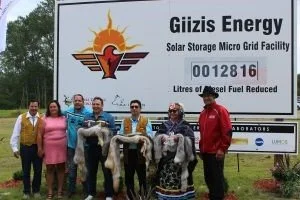What Can We Learn from Indigenous Communities about Microgrids?
Source: Lisa Cohn · MICROGRID KNOWLEDGE · | November 22, 2021
Source: Giizis Solar Storage Microgrid, at Kiashke Zaaging Anishinabek community. Photo courtesy of Indigenous Clean Energy.
In Canada, indigenous community members, developers and utilities work together to maximize the potential of microgrids to combat climate change, with indigenous communities often owning a share in the projects.
The US government, policymakers and the microgrid industry could model this approach to fight climate change and strike partnerships with indigenous communities, said Chris Henderson, executive director of Indigenous Clean Energy, a nonprofit organization that promotes collaboration with indigenous peoples for a clean energy future.
“It would be fair to describe indigenous people as the country’s strongest clean energy community,” according to the report “Accelerating Transition: Economic Impacts of Indigenous Leadership in Catalyzing the Transition to a Clean Energy Future Across Canada.”
“The real point we’re making: There is opportunity for greater collaboration in places like Hawaii,” Henderson said, noting that Hawaii’s energy mix includes 12% coal and clean microgrids could replace that. “There’s a real synergy between sharing information about how these projects can be developed. We are doing dozens of projects at a time,” he added.

